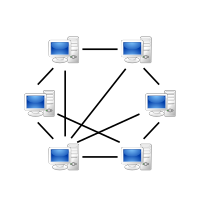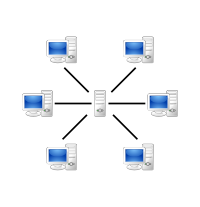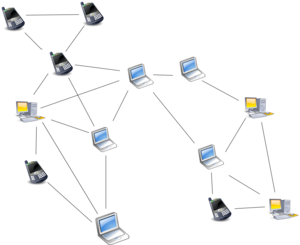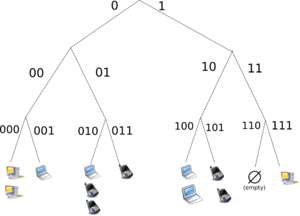Tariq Saeedi
As to how does the blockchain technology work, here is an example from the useful guide published by Blockgeeks:
“The traditional way of sharing documents with collaboration is to send a Microsoft Word document to another recipient and ask them to make revisions to it. The problem with that scenario is that you need to wait until receiving a return copy before you can see or make other changes because you are locked out of editing it until the other person is done with it. That’s how databases work today. Two owners can’t be messing with the same record at once. That’s how banks maintain money balances and transfers; they briefly lock access (or decrease the balance) while they make a transfer, then update the other side, then re-open access (or update again). With Google Docs (or Google Sheets), both parties have access to the same document at the same time, and the single version of that document is always visible to both of them. It is like a shared ledger, but it is a shared document. The distributed part comes into play when sharing involves a number of people.
“Imagine the number of legal documents that should be used that way. Instead of passing them to each other, losing track of versions, and not being in sync with the other version, why can’t *all* business documents become shared instead of transferred back and forth? So many types of legal contracts would be ideal for that kind of workflow. You don’t need a blockchain to share documents, but the shared documents analogy is a powerful one.” – William Mougayar, Venture advisor, 4x entrepreneur, marketer, strategist, and blockchain specialist
The Three Pillars of Blockchain Technology
The three main properties of Blockchain Technology which have helped it gain widespread acclaim are as follows:
- Decentralization
- Transparency
- Immutability
For anyone trying to gain insight into the blockchain technology and how it works, the starting point would be the Guide compiled and published by Blockgeeks:
What is Blockchain Technology? A Step-by-Step Guide For Beginners – by Ameer Rosic
Blockgeeks, last updated on 1 March 2019
https://blockgeeks.com/guides/what-is-blockchain-technology/
* * *
The Peer-to-Peer (P2P) systems gained popularity in 1999 with the file sharing structure of Napster, a site primarily meant for exchanging music.
The blockchain technology needs P2P environment for its functionality.

Peer-to-Peer (P2P) model
The P2P computing or networking is a distributed application architecture that partitions tasks or workloads between peers. Peers are equally privileged, equipotent participants in the application. They are said to form a peer-to-peer network of nodes.

Client-Server model
Peers make a portion of their resources, such as processing power, disk storage or network bandwidth, directly available to other network participants, without the need for central coordination by servers or stable hosts. Peers are both suppliers and consumers of resources, in contrast to the traditional client-server model in which the consumption and supply of resources is divided.

Overlay network diagram for an unstructured P2P network, illustrating the ad hoc nature of the connections between nodes
Emerging collaborative P2P systems are going beyond the era of peers doing similar things while sharing resources, and are looking for diverse peers that can bring in unique resources and capabilities to a virtual community thereby empowering it to engage in greater tasks beyond those that can be accomplished by individual peers, yet that are beneficial to all the peers.
A P2P network can be both structured and unstructured.
The information and graphics in this part of the report are taken from the Wikipedia entry Peer-to-Peer – https://en.wikipedia.org/wiki/Peer-to-peer

Overlay network diagram for a structured P2P network, using a distributed hash table (DHT) to identify and locate nodes/resources
The P2P networking can be used for a vast number of purposes. Here are some of the applications of P2P networking:
- Content Delivery, such as Correli Caches, Linux distribution
- File sharing networks, such as Gnutella, G2, eDonkey
- Multimedia, such as P2PTV, PDTP protocols
- Energy trading, such as the trading platforms of Power Ledger, Bovlabs
- Cryptocurrencies, such as Bitvoin, Ether, Nxt, Peercoin
- Cache for LANs, such as Dalesa
- Search engines, such as FAROO
- Integrated cryptocurrency and digital payment systems, such as Filecoin
- Resources for creative and artistic file sharing, such as Infinit
- Content-addressable, peer-to-peer method of storing and sharing hypermedia distribution protocol such as IPFS (InterPlanetary File System)
- Peer-to-peer protocols for Java Platforms, such as JXTA
- Wireless community networks independents of Internet, such as Netsukuku
- Connecting the sharing applications that share Internet access with other devices, such as Open Garden
- Research work and knowledge base, such as the Chord project, the PAST storage utility, the P-Grid, and the CoopNet content distribution system
- Trading and eCommerce, such as Tradepal and M-commerce
- Modern network warfare strategy, such as the use of P2P networks by DARPA
These are just some of the uses of P2P networking, and the possibilities are expanding with each passing day.
* * *
Just imagine. Just imagine for a moment: There are billions of smartphones in the world, most of them connected to the net; there are billions of tablets, laptops, and PCs also connected to the net. If lighter but mutually integrated blockchain applications and P2P networking become available to all of them within the potential of their own hardware configurations – Just imagine. /// nCa, 19 November 2019
To be continued . . .